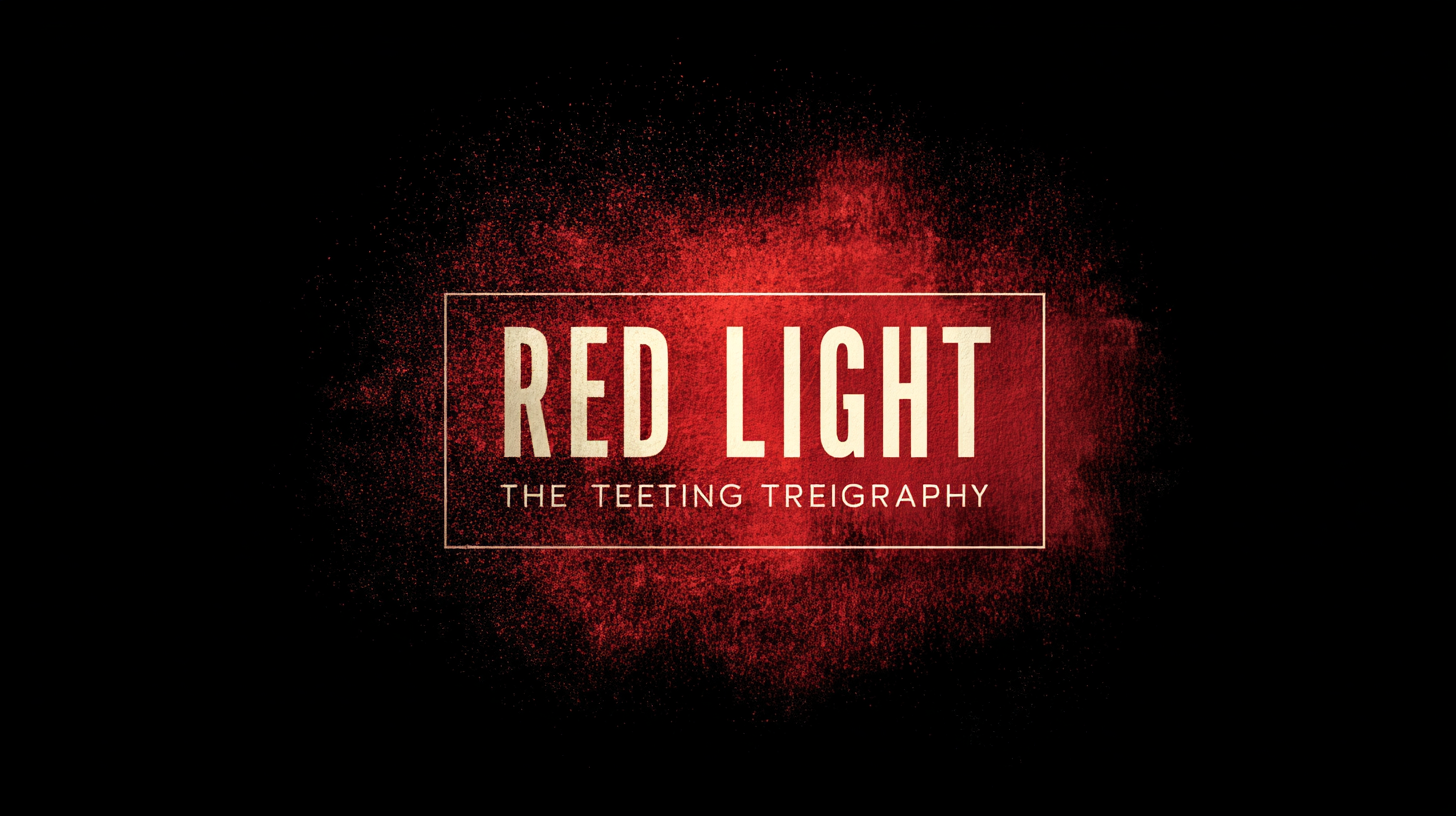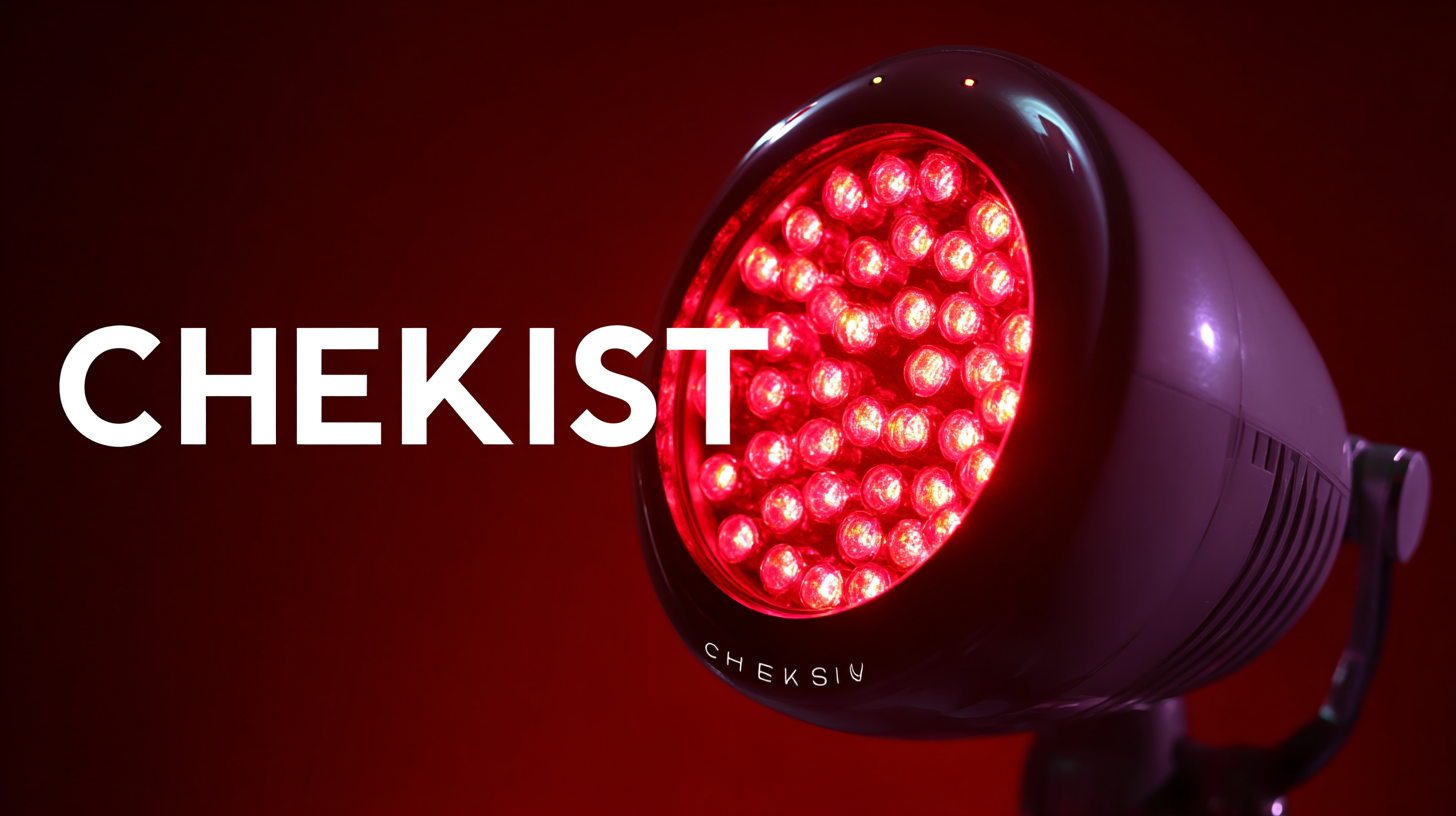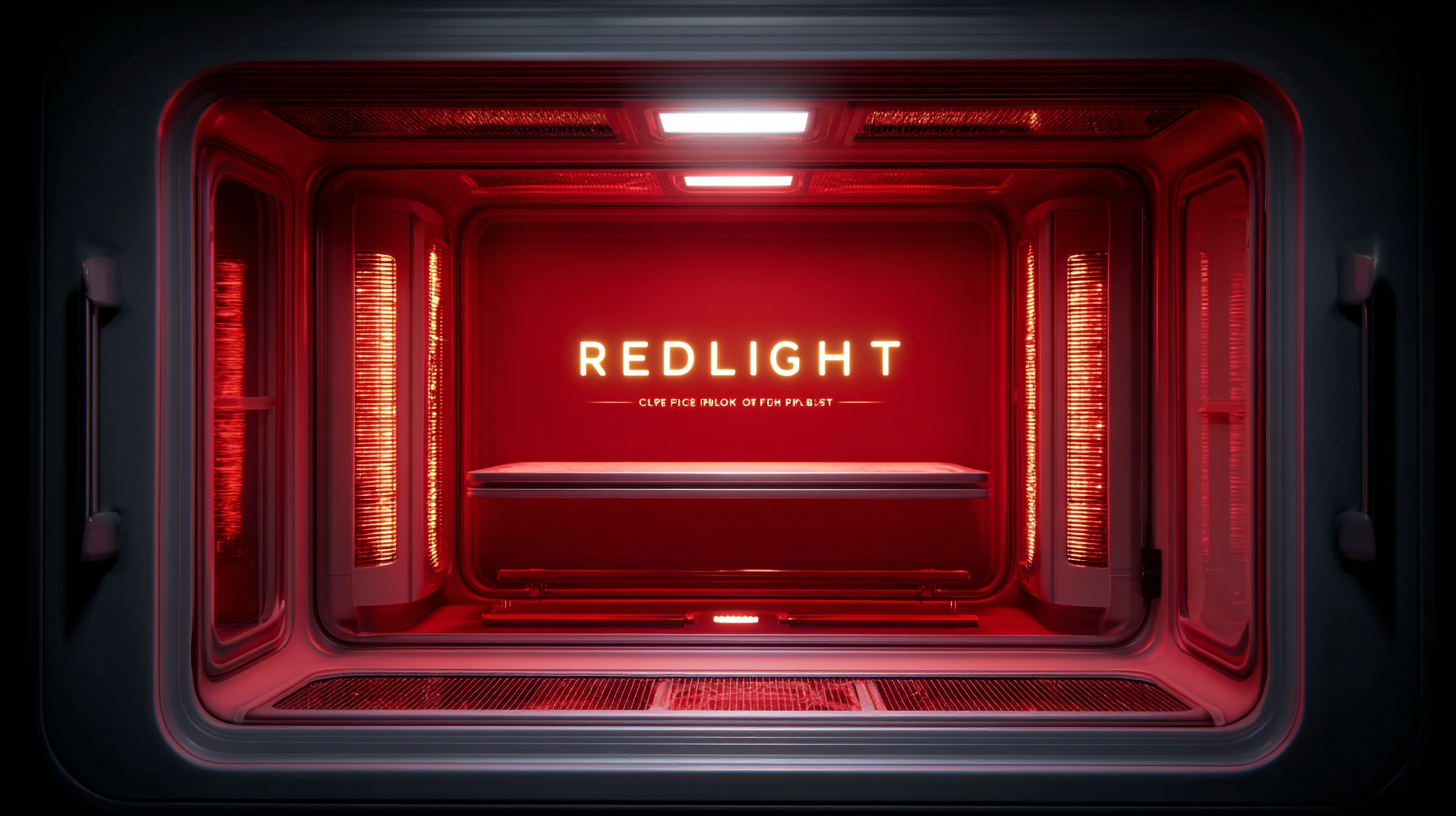The Ultimate Checklist for Sourcing the Best Red Light Therapy Products
The Red Light Therapy (RLT) has gained significant traction in both wellness and medical circles, with market reports projecting a compound annual growth rate of 28.5% from 2021 to 2028, highlighting an increasing recognition of its benefits. This non-invasive modality harnesses the power of low-level wavelengths, typically in the red and near-infrared spectrum, to stimulate cellular processes and promote healing. Studies have shown that RLT can be effective in reducing inflammation, alleviating pain, and improving skin health, making it an appealing option for consumers seeking holistic approaches to wellness. However, with a saturated market, sourcing the best RLT products can be challenging. A thorough understanding of product types, quality, and efficacy is essential for making informed decisions that maximize the therapeutic potential of The Red Light Therapy. This ultimate checklist aims to guide consumers through the complexities of selecting high-quality RLT devices that meet their specific needs.

Red Light Therapy: An Overview of Benefits and Technological Advances in 2025
Red Light Therapy (RLT) has garnered significant attention in recent years, driven by advancements in technology and a growing body of research supporting its benefits. By 2025, the market for RLT products is projected to reach approximately $1.5 billion, reflecting an annual growth rate of over 10%. This surge is largely attributed to the increasing awareness of its potential applications in skincare, pain management, and overall wellness. According to a study published in the Journal of Photomedicine and Laser Surgery, RLT has been shown to enhance collagen production, accelerate wound healing, and reduce inflammation, making it a versatile tool for both medical and aesthetic uses.
The technological advances in RLT devices have also contributed to their effectiveness and accessibility. Innovations such as LED technology and targeted wavelength outputs have improved the precision of treatments, allowing for better penetration and uptake in the tissues. A report by Grand View Research states that the efficacy of RLT is further supported by its safe application, with minimal side effects reported in clinical trials. As we progress through 2025, consumers can expect more sophisticated products that integrate smart technology, facilitating personalized treatment plans based on individual needs and optimal light exposure. The future of RLT is promising, with ongoing research likely to uncover even more benefits and applications.

Key Features to Consider When Sourcing Red Light Therapy Devices for Optimal Results
When sourcing red light therapy devices, it’s crucial to consider several key features that can significantly impact the effectiveness and safety of the treatment. Firstly, the wavelength of light emitted is paramount. Research suggests that wavelengths between 600nm and 650nm (red light) and 800nm to 850nm (near-infrared light) are optimal for penetrating the skin and promoting cellular repair. Devices that offer a combination of these wavelengths can maximize therapeutic benefits, targeting different tissues effectively.
Another important factor is the power output of the device, typically measured in milliwatts per square centimeter (mW/cm²). A higher power output ensures that sufficient light penetrates the skin, which enhances the treatment's efficacy. Additionally, consider the treatment area size; larger panels can cover more skin, offering convenience for those targeting expansive body areas. Finally, ensure that the device has safety certifications, like FDA clearance, to validate its safety and effectiveness. Prioritizing these features will help you source the best red light therapy products for optimal results.
The Ultimate Checklist for Sourcing the Best Red Light Therapy Products
This bar chart illustrates key features to consider when sourcing red light therapy devices. The data reflects optimal values for wavelength, power output, treatment time, portability, and price, all of which are essential for achieving optimal results.
The Impact of Wavelengths: Selecting the Most Effective Red Light Therapy Products
When selecting red light therapy products, understanding the impact of wavelengths is crucial to achieving optimal results. Research indicates that red light therapy primarily operates within the range of 600 to 900 nanometers, with specific wavelengths proving more effective for various therapeutic applications. A meta-analysis published in the *Journal of Photochemistry and Photobiology* highlights that wavelengths around 650 nm are effective for promoting collagen synthesis, making them ideal for skin rejuvenation treatments. Similarly, longer wavelengths, such as 810 nm, penetrate deeper into tissues, which is beneficial for muscle recovery and pain management.
The depth of penetration and the biological effects elicited by different wavelengths can significantly influence treatment outcomes. According to a report by the *American Society for Photobiology*, wavelengths between 800-850 nm have been shown to enhance ATP production in cells, which is essential for energy metabolism and tissue repair. Choosing a device that emits the correct wavelength can maximize therapeutic benefits, whether for skin issues, injury recovery, or enhancing overall wellness. With growing consumer interest in red light therapy, sourcing high-quality products that meet these specific wavelength criteria is more important than ever.

Emerging Trends: Innovations in Red Light Therapy for Home and Clinical Use by 2025
As we look toward 2025, the landscape of red light therapy (RLT) is poised for significant advancements. With the global red light therapy market expected to reach $2.42 billion by 2025, driven by growing consumer awareness and technological innovations, it’s essential to stay informed on the emerging trends that can enhance both home and clinical use. Notable developments include more efficient LED technology that enhances light output while reducing energy consumption, making devices more accessible and eco-friendly.
Tip: When sourcing red light therapy products, prioritize those that utilize medical-grade LEDs to ensure optimal efficacy. Products featuring a combination of red and near-infrared wavelengths also promise improved therapeutic outcomes, as clinical studies have shown they can penetrate deeper into tissues for enhanced healing effects.
Additionally, the rise of subscription-based models for RLT equipment could facilitate regular access for users, fostering a more sustainable approach to at-home therapy. As equipment becomes smarter through integrated technology, users can expect devices that offer tailored treatment protocols based on individual needs, as well as remote monitoring capabilities for healthcare providers—ensuring a more personalized and effective experience.
Tip: Look for devices that offer customizable settings and mobile app integration to track your progress and adjust treatments as necessary for optimal results.
Expert Recommendations: Top Brands Leading the Red Light Therapy Market in 2025
As we look ahead to 2025, the red light therapy market is more competitive than ever. Numerous brands are emerging with innovative products that promise effective solutions for pain relief, skin rejuvenation, and overall wellness. When selecting the best red light therapy devices, it’s essential to consider reputable brands known for their quality and scientific backing. Brands like Joovv, Mito Red Light, and LightStim are taking the lead, offering advanced technologies and customer satisfaction that set them apart from the rest.
When searching for the perfect red light therapy product, here are a few tips to keep in mind. First, evaluate the device's wavelength. Effective red light therapy typically operates between 600 nm to 900 nm for optimal skin absorption. Second, pay attention to the size and coverage area of the device. Larger panels can treat more areas effectively, while handheld devices are perfect for targeted treatment. Lastly, consider user reviews and clinical studies that support the effectiveness of the product, as real-world feedback can provide invaluable insights into your potential purchase.
The Ultimate Checklist for Sourcing the Best Red Light Therapy Products - Expert Recommendations: Top Brands Leading the Red Light Therapy Market in 2025
| Product Type |
Wavelength (nm) |
Power Output (mW/cm²) |
Treatment Time (minutes) |
Price (USD) |
| Handheld Device |
660 - 850 |
100 |
10 |
150 |
| Full-Body Panel |
630 - 850 |
200 |
15 |
800 |
| Facial Mask |
630 - 660 |
50 |
20 |
250 |
| Portable Lamp |
850 |
70 |
8 |
120 |
| Neck and Shoulder Device |
660 - 850 |
80 |
12 |
180 |







